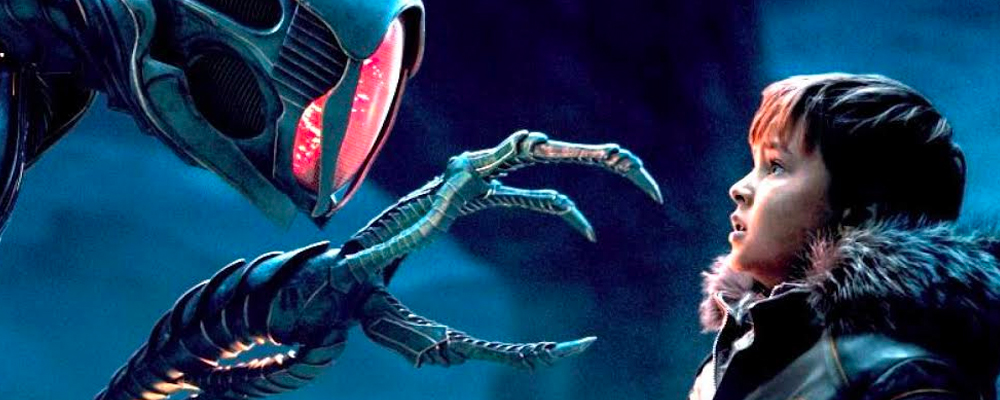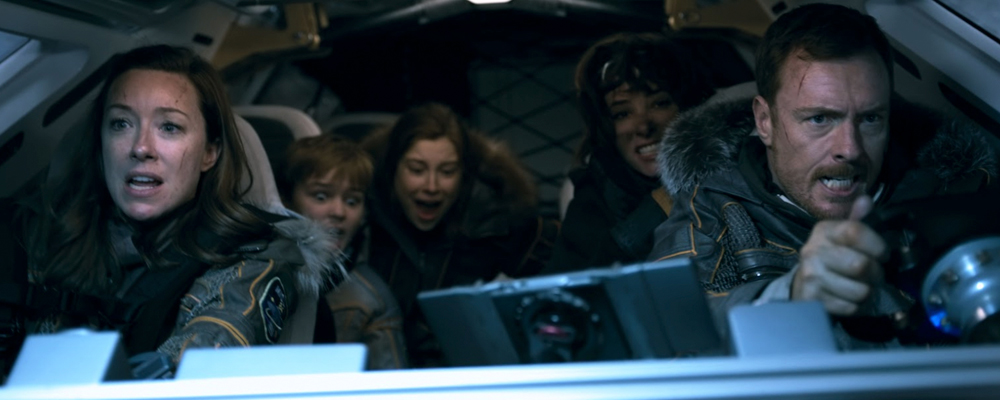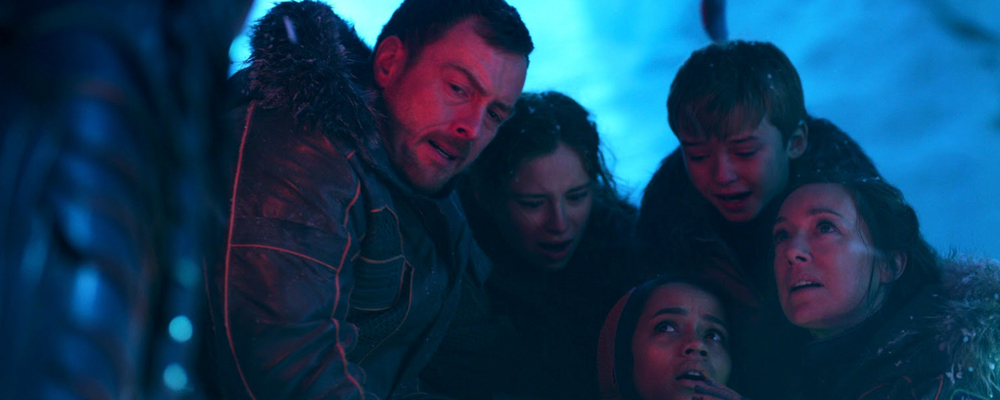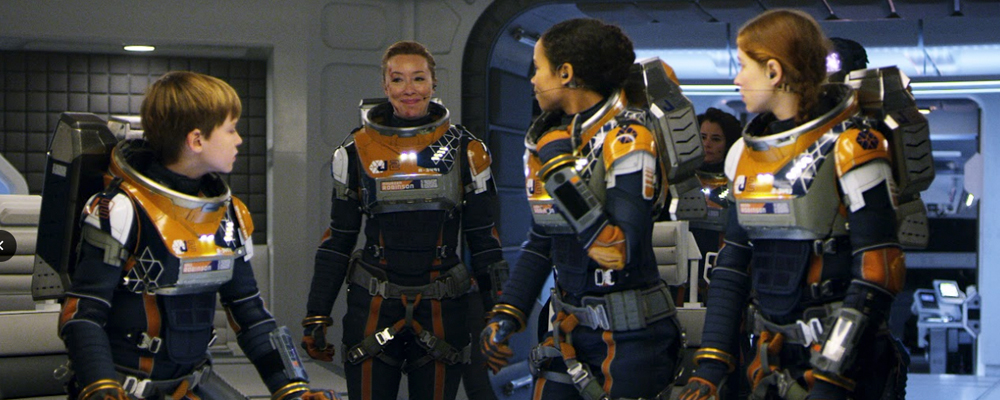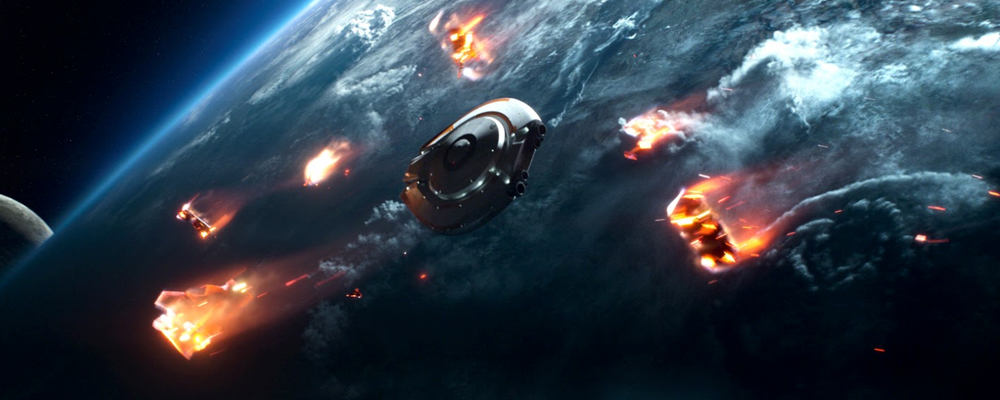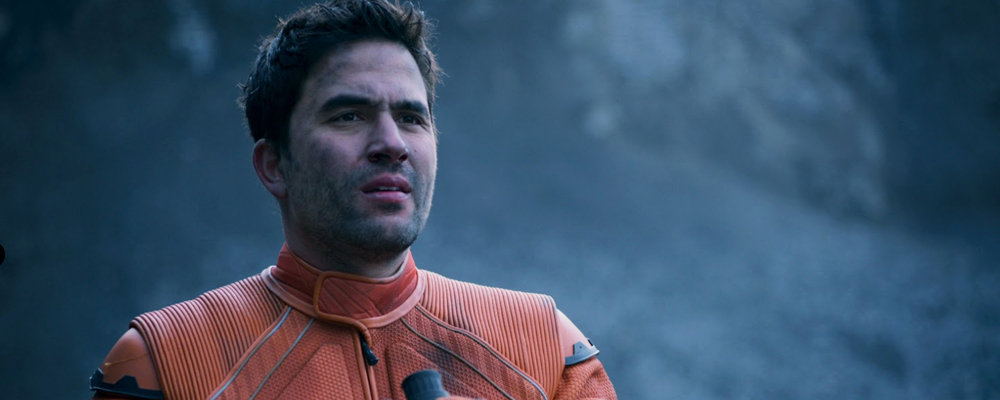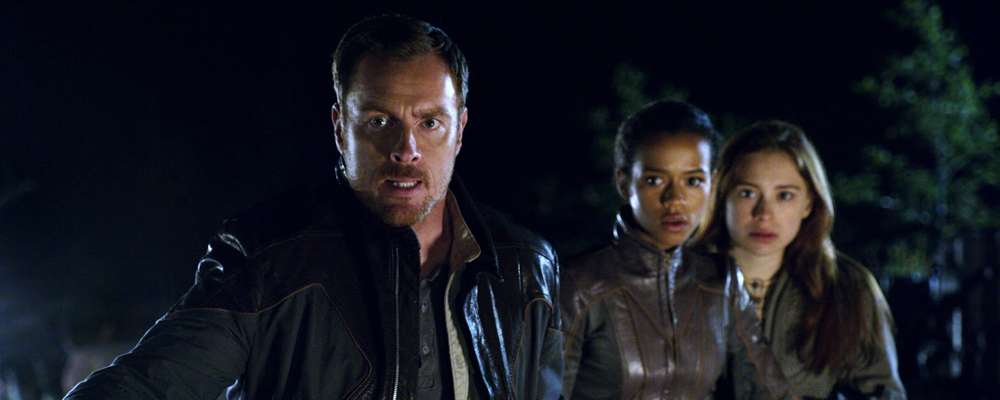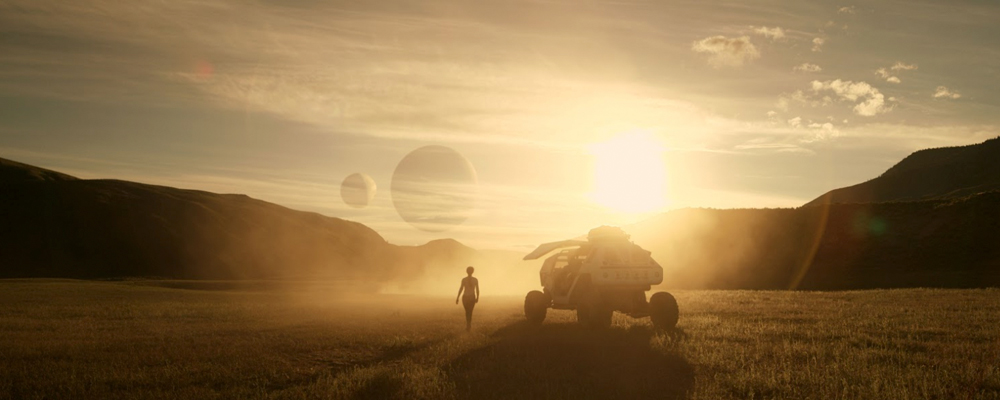Netflix’s ‘Lost in Space’ Reboot Is a Nostalgic Thrill Ride
Aaron Berke
“Lost in Space” reboots the classic 1965 sci-fi series of the same name. The new Netflix version once again follows the Robinson family as they are stranded on a mysterious planet in the far reaches of outer space. The series is chock-full of nostalgic thrills, keeping its tone focused on adventure, while its heart stays firmly within the inter-personal dynamics of the Robinson family.
The first episode begins with the Robinson family playing cards in a space ship that’s drifting out of orbit. The stakes quickly amp up as the ship crash lands on an unfamiliar planet of dangerous terrain, with an ice storm that threatens to engulf them. The family includes military dad John (Toby Stephens), badass mom Maureen (Molly Parker), medically savvy adopted daughter Judy (Taylor Russell), mischievous and courageous daughter Penny (Mina Sundwall) and of course, genius with a heart of gold son, Will (Maxwell Jenkins). The Robinsons fight to survive their dangerous new environment while working through their unresolved family issues.
The series immediately establishes an impeccable balance between high stakes-adventure and intimate family moments. The first episode separates the family in a couple of intriguingly dramatic ways. With the Robinsons’ ship trapped underwater, Judy swims below to retrieve a device, but an ice surge freezes the water, trapping Judy inside the ice with only 5 hours of oxygen. As the family struggles to rescue her, time slowly runs out, and the increasingly desperate situation triggers many emotional moments between the Robinsons. Later in the episode, Will becomes separated as well, discovering a lush green terrain remarkably different from the arctic tundra. But the thrill of the new environment quickly fades when Will is cornered by an apparently dangerous robot. Danger turns to curiosity, and curiosity turns to an unbreakable bond as Will and the robot save each other’s lives.
Both scenarios are driven by suspense yet are grounded by emotional intimacy. It proves to be a balance that “Lost in Space” navigates beautifully over the course of its 10-episode run. The introduction of the robot into the family creates friction between the Robinsons. We learn through flashbacks that the robot was partially responsible for the destruction of the space station colony the Robinsons had been inhabiting prior to their crash. Yet Will swears that the robot has changed and trusts his metallic new guardian with his life. Their bond is not unlike that of Elliot and E.T. from Steven Spielberg’s classic film. They appear to be mentally and emotionally connected, with the robot acting to protect Will from danger by reading his emotional state. Their bond is one of the most moving aspects of the series, and successfully replicates that special Spielbergian brand of kid-friendly magic.
The series also has a Spielbergian impulse towards nostalgic adventure. Chase scenes through the mysterious planet’s ever-changing terrain are evocative of thrilling moments from classic adventure serials, complete with a broad, sweeping score. The music is delightfully evocative of John Williams, which feels appropriate considering Williams wrote the original “Lost in Space” theme. The series borrows liberally from both fantasy and sci-fi source material, with diverse results. The third episode features hidden creatures sneaking their way through the spaceship’s pipes, replicating an unsettling mold very similar to “Alien.” On the flipside, the fourth episode focuses on the Robinson kids as they journey with the robot to a hidden cave, running from dangerous creatures along the way. It’s a vibe reminiscent of fantasy films like “Explorers” and “Escape from Witch Mountain,” keeping its focus on sibling dynamics. The stylistic fantasy/sci-fi influences change depending on the episode, and that’s all part of the fun.
Part of what sustains the stylistic changes is the consistently impeccable direction. The first two episodes are directed by “Game of Thrones” helmer Neil Marshall, and he utilizes the same thrilling sense of scope present in the HBO fantasy series. The first episode of “Lost in Space” uses gigantic, sweeping shots of the arctic tundra and juxtaposes them with dramatic views of a burning forest. It’s a song of ice and fire, much like the series from which Marshall hails. Later episodes replicate this kind of vast imagery. Sometimes it’s in expansive, intimidating views of outer space. Other times it’s quiet yet beautiful expanses, such as the sequence when the Robinsons view what appear to be purple, flying jellyfish filling up their planet’s skyline in a unique aurora. Such moments of visual beauty elevate “Lost in Space” to cinematic heights.
The series interweaves flashbacks at key moments, and this proves an intriguing structural element. We learn more about the Robinsons through well-timed flashbacks to planet Earth, which apparently went through major natural disasters that necessitated the establishment of space colonies. Moreover, we learn about the sociopathic Dr. Smith (Parker Posey), a stowaway who stole her sister’s identity and murdered a security officer in order to secure her place in the colony.
In the present, Dr. Smith is a recurring threat to the Robinsons, who rescue her from an ice storm and spend the early episodes blissfully unaware of her scheming machinations. Dr. Smith proves to be the most fascinating character in “Lost in Space,” her murderous self-preservation giving way to an unhealthy fixation on the Robinsons. She begins to see the Robinsons as the family she always wanted while manipulating them for her own ends. Dr. Smith’s unpredictable actions are played with scintillating glee by Parker Posey, who steals every scene she’s in. Yet through it all, the Robinsons are the glue that hold the series together.
“Lost in Space” sets itself apart as a series that captures adventurous nostalgia and incorporates it into the exploits of a modern family. The Robinsons are just like any other family, except they live in another galaxy. As the audience, we root for them to work though their differences and find their way home. No matter what outer space throws at them, the Robinsons remain an unbreakable unit, and that’s exactly what makes them so worth watching. With high stakes and emotional resonance, “Lost in Space” is a modern update that’s worth getting lost in.
“Lost in Space” premieres all 10 episodes April 13 on Netflix.

